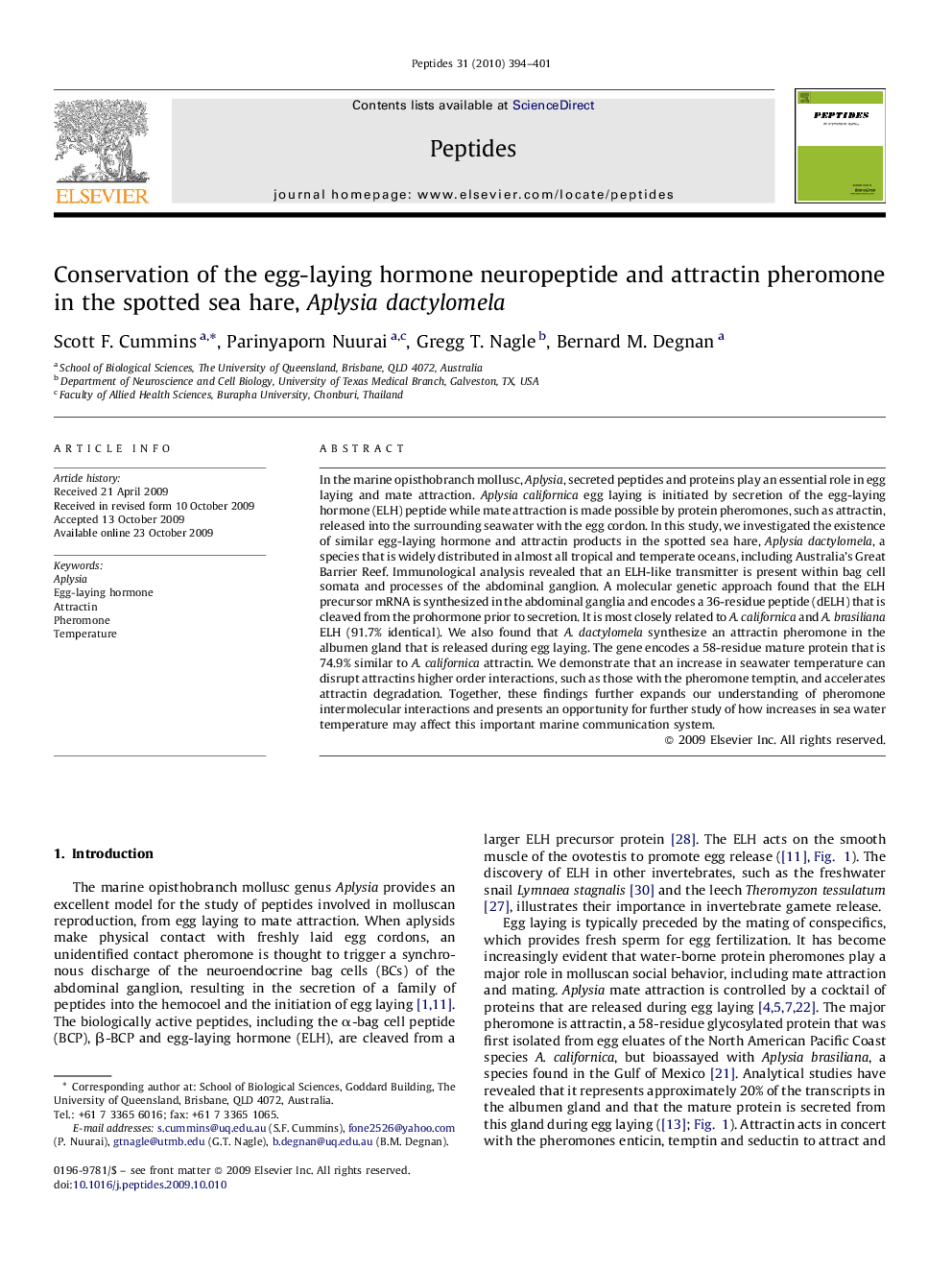| کد مقاله | کد نشریه | سال انتشار | مقاله انگلیسی | نسخه تمام متن |
|---|---|---|---|---|
| 2007272 | 1066369 | 2010 | 8 صفحه PDF | دانلود رایگان |

In the marine opisthobranch mollusc, Aplysia, secreted peptides and proteins play an essential role in egg laying and mate attraction. Aplysia californica egg laying is initiated by secretion of the egg-laying hormone (ELH) peptide while mate attraction is made possible by protein pheromones, such as attractin, released into the surrounding seawater with the egg cordon. In this study, we investigated the existence of similar egg-laying hormone and attractin products in the spotted sea hare, Aplysia dactylomela, a species that is widely distributed in almost all tropical and temperate oceans, including Australia's Great Barrier Reef. Immunological analysis revealed that an ELH-like transmitter is present within bag cell somata and processes of the abdominal ganglion. A molecular genetic approach found that the ELH precursor mRNA is synthesized in the abdominal ganglia and encodes a 36-residue peptide (dELH) that is cleaved from the prohormone prior to secretion. It is most closely related to A. californica and A. brasiliana ELH (91.7% identical). We also found that A. dactylomela synthesize an attractin pheromone in the albumen gland that is released during egg laying. The gene encodes a 58-residue mature protein that is 74.9% similar to A. californica attractin. We demonstrate that an increase in seawater temperature can disrupt attractins higher order interactions, such as those with the pheromone temptin, and accelerates attractin degradation. Together, these findings further expands our understanding of pheromone intermolecular interactions and presents an opportunity for further study of how increases in sea water temperature may affect this important marine communication system.
Journal: Peptides - Volume 31, Issue 3, March 2010, Pages 394–401